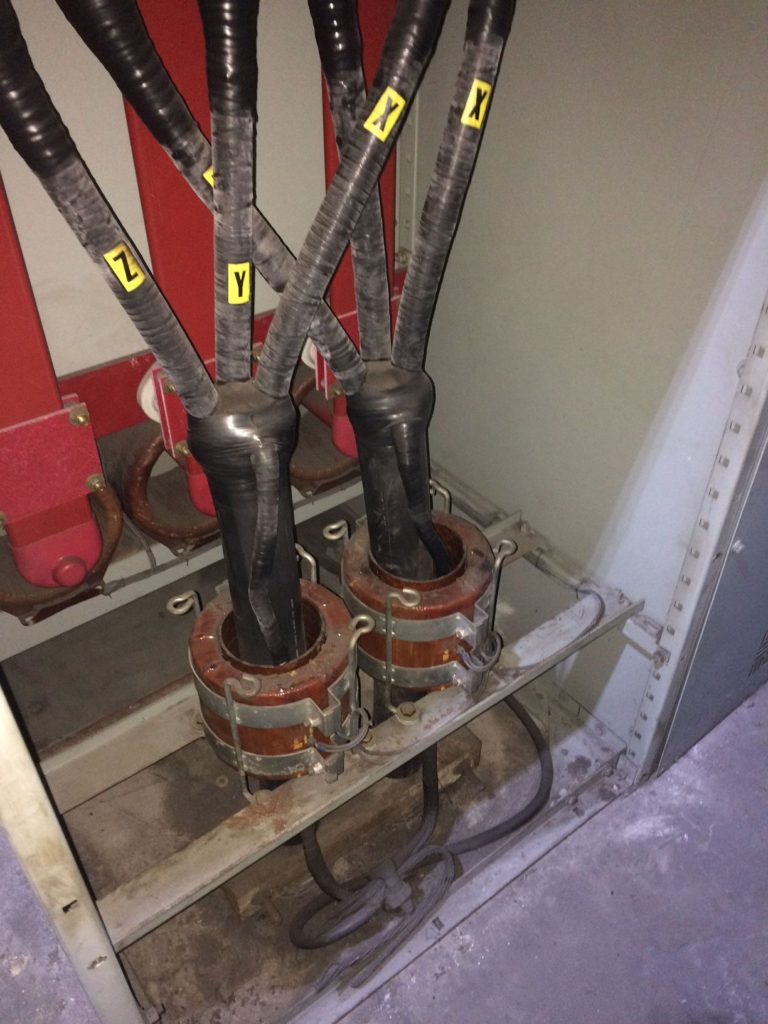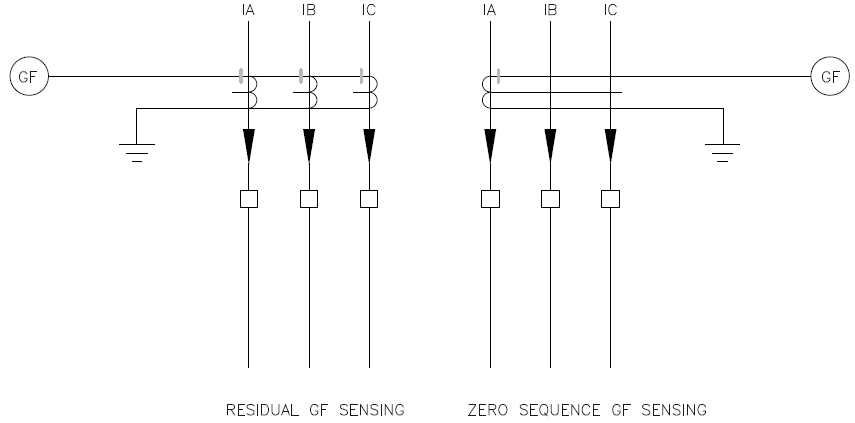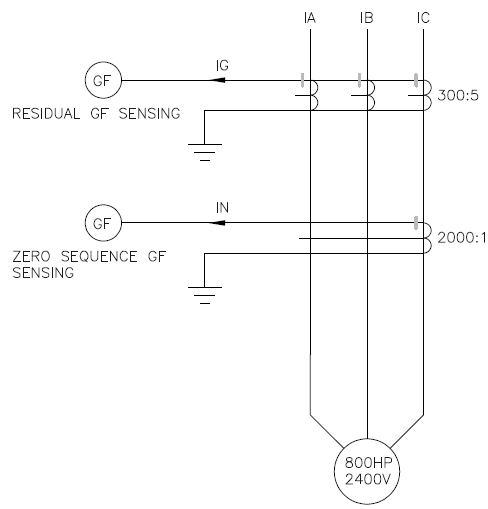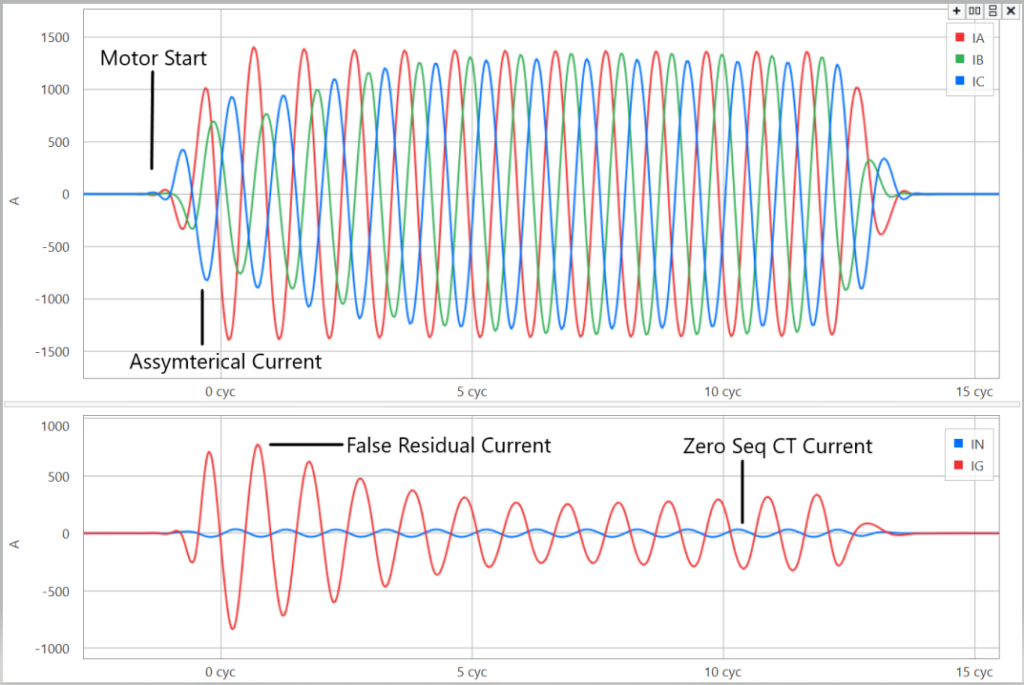Zero Sequence Current Transformer [ZSCT] also known as Core Balance Current Transformer [CBCT] is a type of current transformer [CT] in which all three phase conductors are passed through the window of a single CT. These CTs are typically used for ground fault sensing and ground fault protection applications. Some of the advantages of using ZSCT are:
- CT ratio for ZSCT is not dictated by load current.
- Secondary current will be indicate zero-sequence current [3I0].
- ZSCT offers more sensitive GF protection for low magnitude faults.
- There is no false residual current caused by asymmetrical current.

Center core of ZSCT carries all three phases of AC current. Under balanced steady state condition, net flux in the CT core will be zero as three phase currents are perfectly balanced.

Secondary CT current will be zero in this case. ZSCT need not be sized for the load current as the CT under normal conditions will have zero ‘net’ current flowing through it. ZSCT are typically sized at say 50:5 or 100:5 etc. Low ratio of ZSCT helps with detecting low magnitude ground faults and is the preferred method of GF detection when the system is resistively grounded.
When there is a ground fault somewhere downstream, current through ZSCT will not add to zero resulting in flux build and secondary current in CT. The secondary current will be proportional to the amount of ‘ground’ current. From sequence component theory we know that the sum of three phase current will give 3 times the zero-sequence current.

Read: Sequence Component
Ground fault relaying using zero sequence current transformer also has advantage over residual type ground fault detection for applications involving large asymmetrical inrush currents (Transformer energization, motor inrush current etc). See figure 2 for simplified representation of residual and zero sequence ground fault detection.

Under asymmetrical inrush current, CT in residual scheme may saturate unevenly causing appearance of false residual current. This is not a problem for zero sequence based current transformer applications.
Read: Parameters that Determine Transformer Inrush Current
Case Study: False operation of motor protection relay
The installation in this case study is a 800HP, 2400V motor schematic of which is shown below. There are two sets of ground fault relaying at this location. One is residually connected and other is zero sequence CT connected to the neutral input of relay. Upon energization of motor the relay tripped on ground fault (High IG).

Motor windings were tested for insulation degradation and was found to not have any issues. Relay waveforms were downloaded and analyzed. It was identified that relay tripped due to 50G element. Why did the relay trip when there is no actual motor ground fault?
On evaluating the waveform, it was found that the asymmetrical phase currents caused phase CTs to saturate at different time and produce ‘false’ ground current. Waveform below shows the event. Note that for the same primary asymmetric current ZSCT secondary current is very less.
Above listed phenomenon is one of the drawbacks of residual ground fault schemes when applied with large inrush loads. This also highlights the advantage of zero sequence current transformer ground fault schemes which are sensitivity and security for high inrush application. Medium voltage cable shield routing through ZSCT is discussed in this article and readers are encouraged to review this.
Read: Current Transformer DC Saturation and Time to Saturate

Disadvantages of ZSCT
ZSCT is an excellent choice to detect GF when applied in resistively grounded systems. However, when applied in grounded source systems with large fault current, ZSCT may saturate. Since ZSCT are invariably low ratio (50:5, 100:5 etc.), the possibility of saturating under heaving ground fault current is high. The reason this is not a widespread problem is because modern digital relays can decipher ground current from severely saturated waveforms more effectively compared to older elelctromechanical relays. In addition, trip setting for ZSCT based GF schemes are likely to be very low. Both these helps in relay positively issuing trip command even with severely saturated ZSCT. There may be some loss of sensitivity with saturated CT though. For very high ground fault levels ZSCT is not recommended, and a residual scheme will be better suited.
